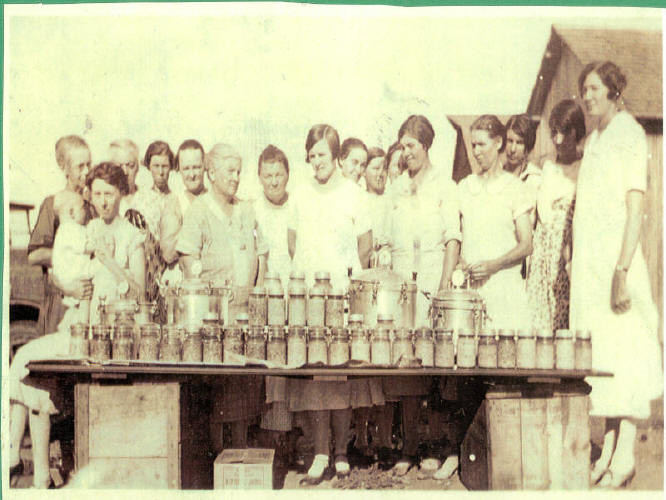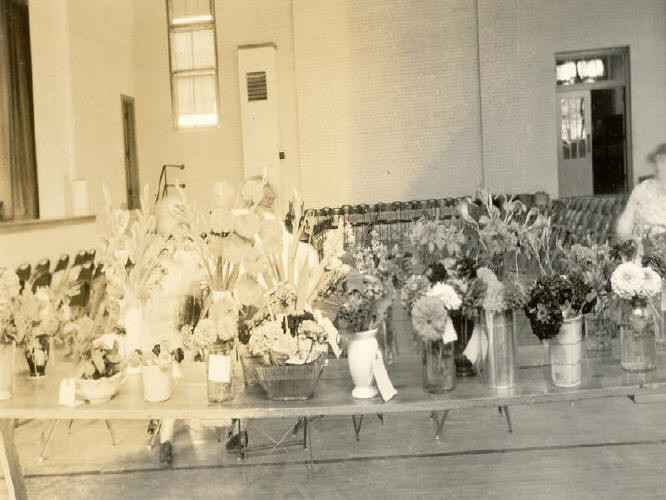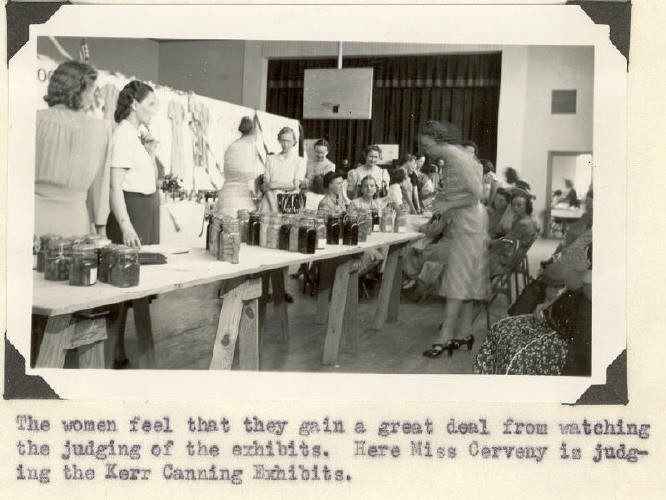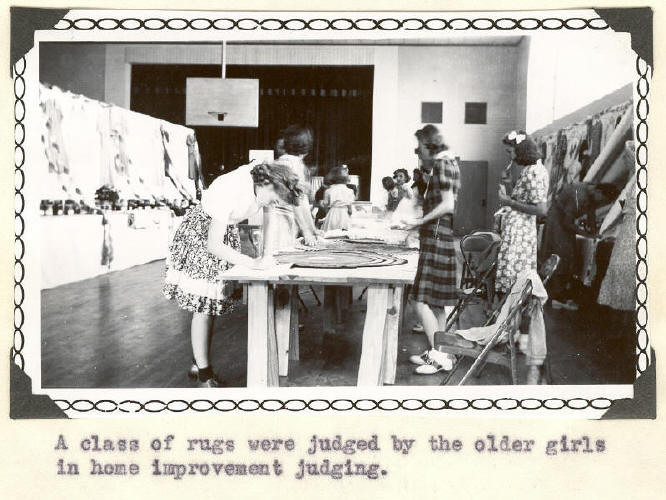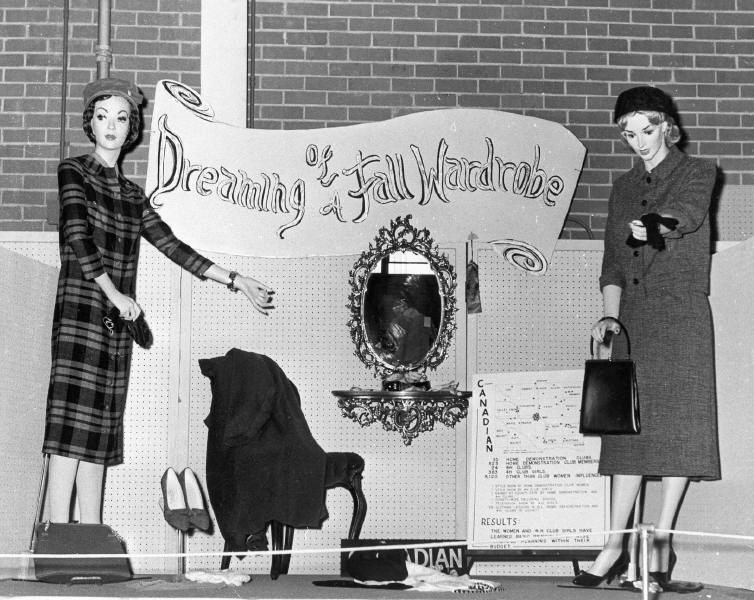| The History of the Canadian County Fair Researched and Written by Carolyn Barker The El Reno Chamber of Commerce organized the Canadian County Fair Association on June 27, 1914. The object of the association was to hold annual fairs and exhibitions and entertainments for the purpose of developing the various resources of Canadian County and the education, refinement and general betterment of the people, also to give businessmen the chance to show the farmers their real appreciation of their cooperation to make Canadian County the first in the State. The first county fair was held on September 16,17 and 18, 1914. The Convention Hall on Rock Island was used to display the agriculture exhibits and the livestock was shown in the large brick livery barn on Bickford. Thursday morning all of the Woodmen Lodges of the county participated in a parade. The groups consisted of the Modern Woodmen of America, the Woodmen of the World and their auxiliaries, the Royal Neighbors, and the Ladies Circles. After the parade a picnic was held on the courthouse yard. In the afternoon a contest of rolling a log about 14 feet long and 2 feet in diameter for a distance of one block in the shortest length of time was held. The Yukon W.O.W. team won it in 30 seconds and the Heaston M.W.A. team took second place with a record of 31 seconds. Another event was a water fight between teams of 3 each from the El Reno Fire Department. A regular fire hose using all the pressure the water plant could give was used to attempt to drive the other team off the pavement on Choctaw Street, near the courthouse. Tug-of-War between the businessmen of Rock Island and Bickford Streets was held on Wednesday. Then on Friday the contest was between the men from the country and the men who lived in town. Other races and contests were fort races between girls, boys and fat men; sack races; wheelbarrow races; the greased pig and greased pole. It was estimated that 1,500 people took part in the flower parade on the last day of the fair. There were divisions for doll buggies, cars, parasols, wagons, wheelbarrows, express carts, horse-drawn vehicles, tricycles, bicycles, dog carts, goat carts, etc. The combined efforts of the El Reno Lion’s Club, El Reno Chamber of Commerce and the El Reno City Commissioners resulted in a permanent home for the county fair. A 7-½ acre tract of land east of the cemetery was chosen in June 1921. The interurban line crossed the land on the east side and the highway passed it on the west. (As the highway at that time went around the corner of the cemetery and up Elm into El Reno.) This provided good roads and easy access to the site, which is located only a half mile east of El Reno. The purchase of this land and funds for construction of a fair building was made possible through the sale of city owned property located northeast of El Reno. The plans called for a fireproof building, which contained hollow tile for the walls and composition slate roofing. Breaking of the ground was officially started July 12 and actual construction began on July 27. The roofing lumber failed to arrive delaying the work on construction. The Pomena Grange voted to furnish 125 members to help erect the fair building. The fair committee agreed to hire a few carpenters to act as overseers and furnish a barbeque noon meal on the workdays. On Wednesday, September 6, 1921 almost 200 volunteer workers labored to finish the building. It was thought the volunteer labor could complete it in two days, but they didn’t quite finish the job. The north wall of the building was blown down on September 11 during a storm, just 3 days before the fair began. That portion of the building was not used. The east and west wings were not damaged and they were used for fair exhibits. Good weather was experienced during the four day fair, therefore the unfinished quarters served its purpose. After the fair was over, work began again to finish the new building. The work was completed by November 1st. The main auditorium had a seating capacity of 1,500 people. The funds were not enough for the new fire proof fair building, so 45 businessmen and firms signed $100 notes to guarantee the completion of the building. Farmers donated animals and farm products and El Reno merchants donated cash and merchandise. These were sold at auction to help raise the money. In 1930 monthly sale days were held at the county fair building by the county fair association to provide the farmers an opportunity to dispose of their surplus livestock, machinery and produce. In 1930 plans were made to move the county fair to Fort Reno. Since the county fair, Indian fair, Indian encampment and Fort Reno polo meet had been combined, it was thought that all of them should be in one location. The fairgrounds were no longer adequate to take care of the exhibits, crowds and parking, but the plans never materialized. Also in 1930 the El Reno Chamber of Commerce had a difficult time raising the $2,500 for the Indian Fair. Approximately 3,500 Cheyenne, Arapaho, Kiowa, Caddo and Comanche Indians were expected at the Fort Reno Encampment. As usual they would spend the mornings at the fair building and the afternoons at Fort Reno, where they staged tribal dances, pow-wows and pony races. Due to the lack of funds, 1931 was the last year for the Canadian County Fair. In 1932 the Canadian County 4-H Club Fair began in its place. The purpose of the fair was to encourage and give all possible aid to the farm boys and girls of the county who were engaged in club work and who would be the future farmers of the community. The fair was held to exhibit the work of the 4-H Club members, but the home Demonstration Clubs also displayed their handi-works. The most unique feature on Saturday of that year was the skillet-throwing contest, in which the women demonstrated their marksmanship. The men participated in a horse-shoe pitching contest. In 1945 the City of El Reno sold some of its city owned property, which included the 7 1/2 acres of the faire grounds. The money was used to purchase a storage building for city trucks and machinery. In the fall of 1954 the county fair board purchased a piece of land west of El Reno, just north of the Thunderbird Coliseum. It had two concrete structures on the land. A livestock barn was erected in time for the 1955 Canadian County Free Fair. It was the first time the county held a county fair, since it reverted to the junior fair in 1932. The coliseum was used for displaying exhibits. The Canadian County Free Fair has continued to be held in this location. Many improvements have been made. |

